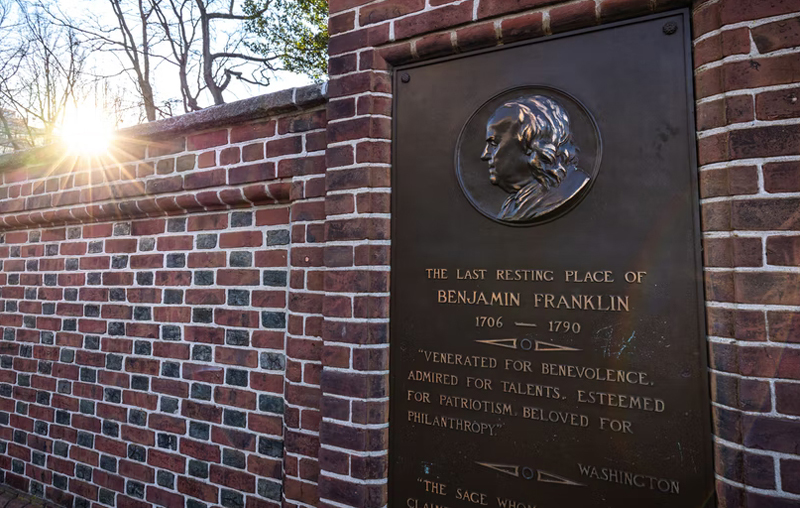Ben Franklin was accomplished statesman – and early weatherman

 CONTRA COSTA COUNTY, CA (July 2, 2022) — At 70 years of age, Benjamin Franklin signed the Declaration of Independence issued by the Continental Congress in 1776.
CONTRA COSTA COUNTY, CA (July 2, 2022) — At 70 years of age, Benjamin Franklin signed the Declaration of Independence issued by the Continental Congress in 1776.
He was the oldest of our country’s Founding Fathers and, in my opinion, the most interesting.
A successful printer, publisher and investor, Franklin retired at age 42. He devoted himself to public works, politics and science for the remainder of his life. He founded the first library in the colonies and established the first mail delivery system.
Franklin was well-traveled. Besides his frequent trips throughout the colonies, he made several sailing-ship journeys across the Atlantic. He was a respected businessman and statesman in England and France.
Franklin’s scientific exploits were as famous as his diplomatic prowess. As a young man, he invented swimming fins because he wanted to swim faster. When his vision began faltering, he disliked carrying two pair of glasses on his travels. He designed and built the first set of bifocals so he could see both near and far using the same pair.
Stormy weather
In the mid-1700s, electricity was the newest scientific discovery, and it fascinated Franklin. He conducted many experiments with static electricity. His most famous one involved flying a kite near a thunderstorm. He deduced, correctly, that a metal key tied to the kite would draw a current from the enhanced electrical field near a lightning storm.
Franklin’s main scientific gift was that he questioned things that didn’t seem to make sense and collected data to establish a new hypothesis. Several of his studies involved weather-related discoveries.
My favorite example occurred when he was studying an eclipse of the moon. He attempted to compare the differences in a lunar eclipse observed at his home in Philadelphia with that observed by his brother in Boston. Unfortunately, weather got in the way.
A strong nor’easter storm blanketed Philadelphia with cloud cover and blocked the eclipse. Franklin assumed the Boston weather was similar, and the eclipse would not be seen.
However, correspondence from his brother indicated the eclipse was visible along the coast of Massachusetts. He mentioned that soon after the eclipse, Boston weather turned stormy with strong northeast winds.
Collecting data
The experience intrigued the scientist. Boston is northeast of Philadelphia, yet a storm featuring northeast winds struck the Liberty Bell city first. Franklin needed data in an era where routine weather observations were non-existent.
The brothers began documenting and comparing weather conditions in Philadelphia and Boston. In time, Franklin correctly surmised that storm systems do not move in the direction of winds at the earth’s surface.
It was a first small step that led to the predictive weather models we use today.
If there were an Independence Day contest to choose a favorite founder, this meteorologist’s vote would go to Ben Franklin: part-time statesman, part-time scientist, full-time thinker.

Woody Whitlatch
Woody Whitlatch is a meteorologist retired from PG&E. Email your questions or comments to
clayton_909@yahoo.com
